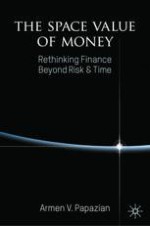2022 | OriginalPaper | Buchkapitel
3. Sustainable Finance: Frameworks Without Value Equations
verfasst von : Armen V. Papazian
Erschienen in: The Space Value of Money
Verlag: Palgrave Macmillan UK
Aktivieren Sie unsere intelligente Suche, um passende Fachinhalte oder Patente zu finden.
Wählen Sie Textabschnitte aus um mit Künstlicher Intelligenz passenden Patente zu finden. powered by
Markieren Sie Textabschnitte, um KI-gestützt weitere passende Inhalte zu finden. powered by
Excerpt
…It is better to be vaguely right than exactly wrong.Carveth Read, Logic: Deductive and Inductive, 1898
